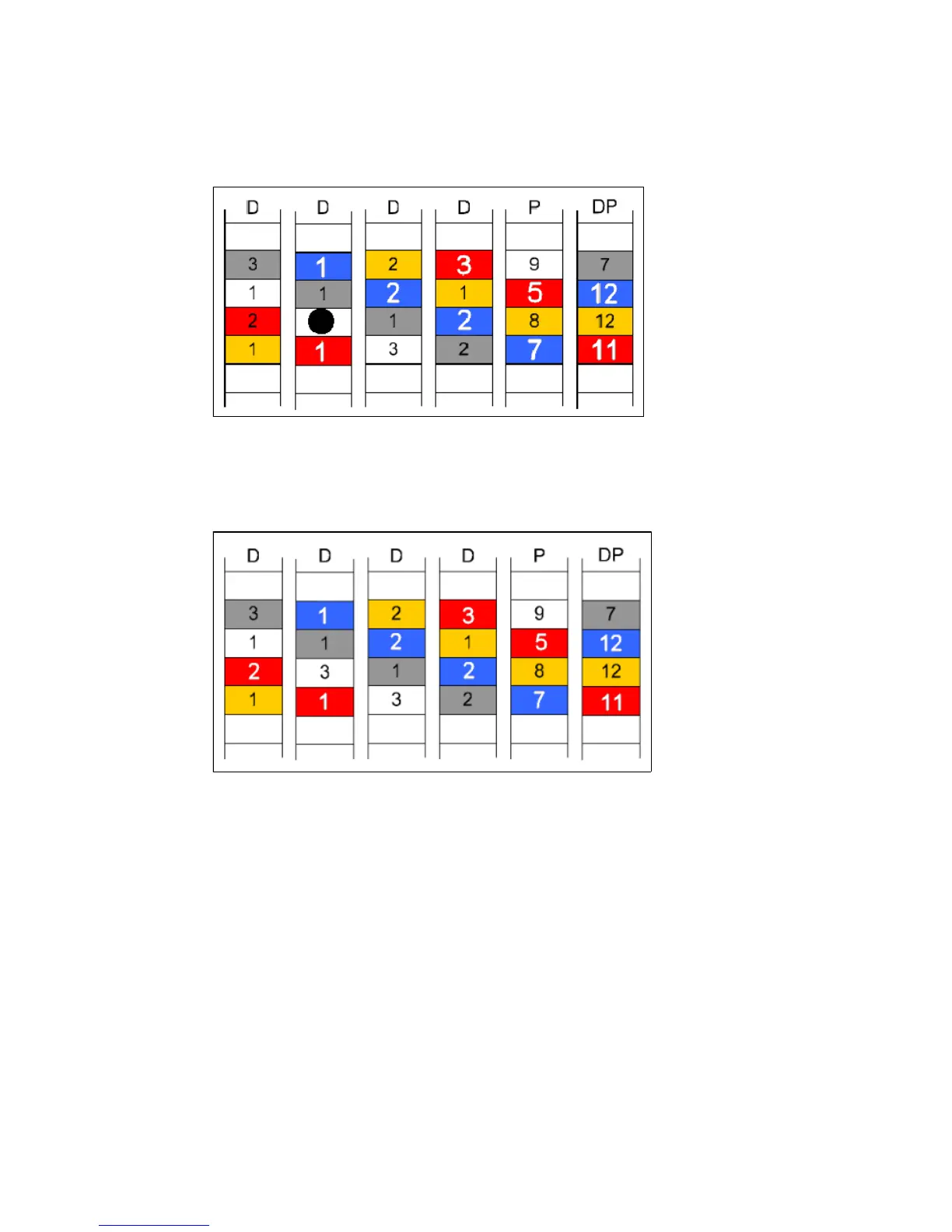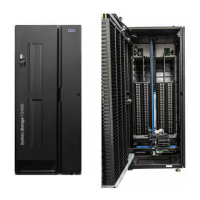Chapter 10. Data protection with RAID Double Parity 159
After the missing block in the horizontal row is re-created, reconstruction switches back to
diagonal parity to re-creating a missing diagonal block. RAID-DP can continue in the current
chain on the red stripe, as shown in Figure 10-17.
Figure 10-17 RAID-DP reconstruction simulation of Red diagonal block
Again, after the recovery of a diagonal block, the process switches back to row parity because
it has enough information to re-create data for the one horizontal block. At this point in the
double-disk failure scenario, all data is re-creating with RAID-DP, as shown in Figure 10-18.
Figure 10-18 RAID-DP reconstruction simulation of recovered blocks optimal status
10.4.5 Protection levels with RAID-DP
The RAID-DP reconstruction simulation that was described in 10.4.4, “RAID-DP
reconstruction” on page 155 shows recovery in operation. However, there are other areas of
RAID-DP that require further description. For example, if a double-disk failure occurs,
RAID-DP automatically raises the priority of the reconstruction process so that the recovery
completes faster. The time in reconstruction of data blocks that are generated from two failed
disk drives is slightly less than the time to reconstruct data from a single-disk failure.
A second key feature of RAID-DP with double-disk failure is that it is highly likely that one disk
failed some time before the second. Therefore, at least some information is already
re-created with traditional row parity. RAID-DP automatically adjusts for this occurrence by
starting recovery where two elements are missing from the second disk failure.
A higher level of protection is available by using RAID-DP with SyncMirror. In this
configuration, the protection level is up to five concurrent disk failures. These failures consist
of four concurrent disk failures followed by a bad block or bit error before reconstruction is
completed.

